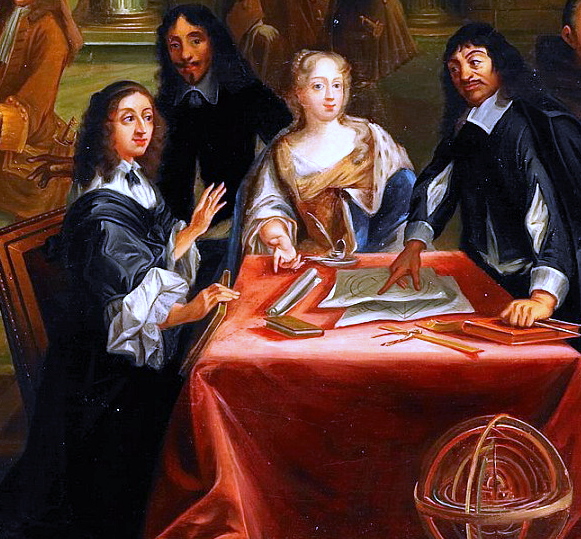
Caption: Queen Christina of Sweden (1626--1689, reigned 1633--1654) (on the left) being instructed by Rene Descartes (1596--1650) in geometry.
A detail from a copy of Descartes at the court of Queen Christina of Sweden, Palace of Versailles, Versailles, France
Features:
- On Protestant side of the
religious divide,
Copernicanism
somehow never developed into a religious issue.
It seems that the work of Galileo and Kepler, the telescope, and other things had largely evaporated Aristotelianism from religion. And without that support, purely Biblical objections to Copernicanism seemed far-fetched.
- There was also the
Copernicanism-based
vortex theory
of Rene Descartes (1596--1650).
This very bad, but alluring, theory had a profound attraction for some of the
physics-minded people in that time (e.g.,
Christiaan Huygens (1629--1695)
(see Wikipedia: Mechanical explanations
of gravitation: Vortex).
Some folks found
Copernicanism
acceptable based on this theory---it's always possible to believe a true result for a wrong reason.
Image link: Wikipedia: File:René Descartes i samtal med Sveriges drottning, Kristina.jpg.
Local file: local link: rene_descartes.html.
File: Astronomer file: rene_descartes.html.